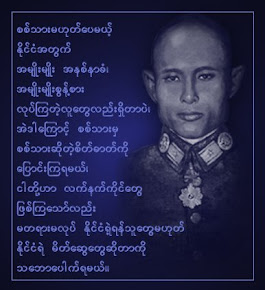The monks who have been driven out of Burma after the September 2007 revolution are not backing down just yet.
IT’S NOT OVER YET: These Burmese monks are among the many who fled after participating in last year’s bloody saffron revolution.
He wears a red robe and has a white scar behind his left ear. He is the oldest here—old compared to the boys who gather under a thatched roof on a Monday afternoon, robes looped over their shoulders. U O Ba Sa is 53, from Pago division in Burma. He sits on the veranda, where thin, brightly printed mats march along one side of the wooden floor. Saffron coloured robes hang on thin wires. Outside, where a young monk sings while cleaning fish, the trees are an impossible green.
On Sept 25, 2007, U O Ba Sa walked across Pago with 5,000 other Burmese monks, throwing empty water bottles at the gates of monasteries whose monks stayed behind closed doors. When darkness crept over Pago, 70 Burmese monks, led by U O Ba Sa, walked the 80km to Burma’s former capital Rangoon.

U O Ba Sa punctuates his story with waving hands and spread fingers: The sun burns high in Rangoon. The monks stop outside an elementary school, waiting as a crowd of schoolchildren spilled out of the school gates. A schoolteacher crosses the street with a 7-year-old holding on to each other’s hand. There is a rumble, and then a Burmese police truck barrels into the crossing group. The teacher and her tiny charges are killed instantly. The monks who try to pick up the bodies are shot. The orange robes turn red.
"Monks are of the people, we cannot watch them suffer."
U O Ba Sa does not know if the truck’s driver intended to kill. He only knows what happened later, when he was beaten until the blood poured out from behind his head. Many rushed out of the school when word spread about the dead students—many more were shot.
“It was all at the same time happening. They couldn’t crack down on us by beating, so they fired.”
It is Janida, a 27-year-old monk with gaunt cheeks and glasses, who translates the stories into English. Janida was working on his bachelor of arts degree in religion in a government university and one of the student leaders during the saffron revolution. Teachers threatened students who protested on the street with expulsion.
“Over 200 protested from my university. Many were afraid. I was in my final year as student. Lost my degree, but degree does not matter. More important what I do for the people.”
The September 2007 saffron revolution rose on the heels of exorbitant fuel price increases. Monks, whose living depended on donations from people, turned over their begging bowls and refused donations from the government.
“In 2007, people are starving, poor and sick. Children cannot go to school. Monks are of the people, we cannot watch them suffer.”
Burmese refugees in Thailand say that after the Burmese army enters a village and razes it to the ground, they proceed to kill off the men.
Parents send off young boys over the age of five to monasteries in the city to protect them from death at the hands of the army or recruitment as child soldiers. Burma’s military is 480,000-strong, nearly the same number as the Buddhist monks with their 500,000 saffron-clad warriors of peace. For many young men, the monastery, and eventually the army, are considered not so much vocations but means of escape. Burmese villages, especially those held by ethnic minorities, are in constant danger of military assault.
Downstairs, the young monk has finished cleaning his fish and is hacking it to pieces. There are white earphones shoved into his ears. He tells me he is a fan of Michael Jackson. Someone plays Top of the World by the Carpenters on a cell phone. There is laughter and voices chiming in requests for Madonna and Avril Lavigne. One monk sits on a mat with a crumpled newspaper open on the sports page, forehead creased, chin on palm. He says he is rooting for Manchester United and Robinho.
There are many monks who decide to forgo their vocation. “They want to wear regular clothes, meet girls, go to movies,” says Nai Nai, a young Burmese graduate student studying in Bangkok.
The families of these monks do not know where their sons and brothers are. There are nearly 30 monks here in Mae Sot. The youngest is 19. They are not safe, not here, too close to the border. Very soon they will have to find another home. Some have managed to secure travel to the United States.
“Maybe there is another country for us. We can’t go back,” says 29-year-old Eindaka from Rangoon.
“In our society,” says Nai Nai, “the monks stand for the people. They get offerings from the people, and if the people suffer, the monks cannot watch. We are related, them and us. That’s why they stand for us.”
Janida fled across the border to the monastery in February. They took his photograph, he says. He can be arrested at any time, of any crime, without the benefit of court or jury.
Many were killed during the September protests. Bodies wrapped in robes turned white in the sun and floated on the rivers. Monks were tied to lampposts and beaten.
And yet Janida does not believe they lost the fight against a tyrant government. The world saw what was happening to their people. For him, it was only a beginning.
“You cannot tell us we lose.” The scholarly young monk is angry, and nearly on his feet. “We win.”
PATRICIA EVANGELISTA - MYSINCHEW










No comments:
Post a Comment